Day 2, 3 – Cinnamon Lodge, Habarana
- Traditional Sigiriya Village tour with Farm Lunch
- Climbing Pidurangala Rock
- Polonnaruva
- Minneriya National Park
- Climbing Sigiriya Rock
Traditional Sigiriya Village tour with Farm Lunch – Later in the morning, we drove from Dambulla to Sigiriya and were taken around a village. We first traveled in a Bullock cart along a mud path with paddy fields on one side and a lake on the other. This was followed by a ride in a traditional catamaran on a lake with a view of Sigiriya Rock. The catamaran dropped us off near a local house where we feasted on a traditional home made lunch made from organic vegetables. The whole experience takes 2-3 hours.
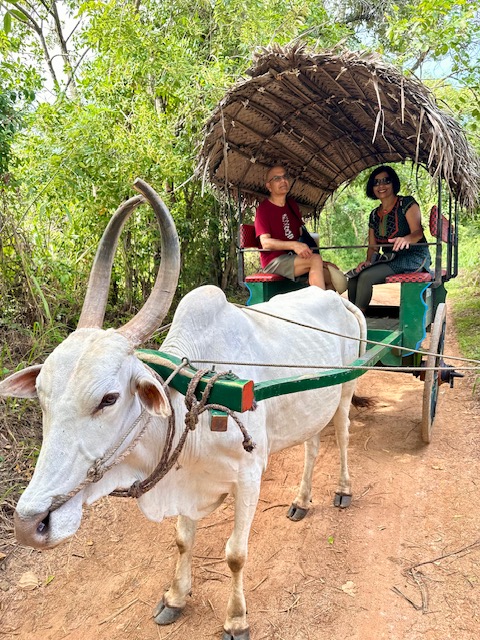
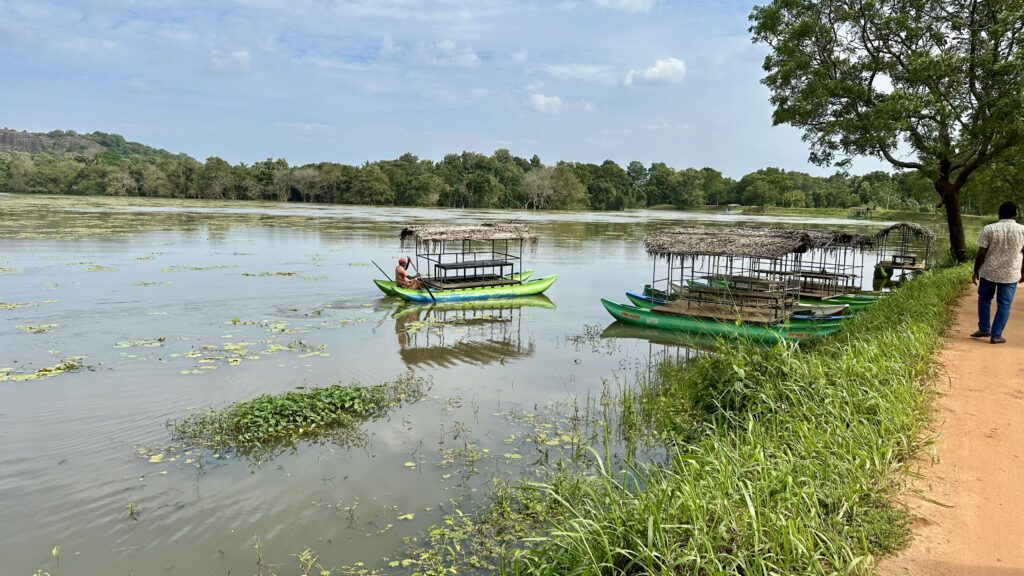
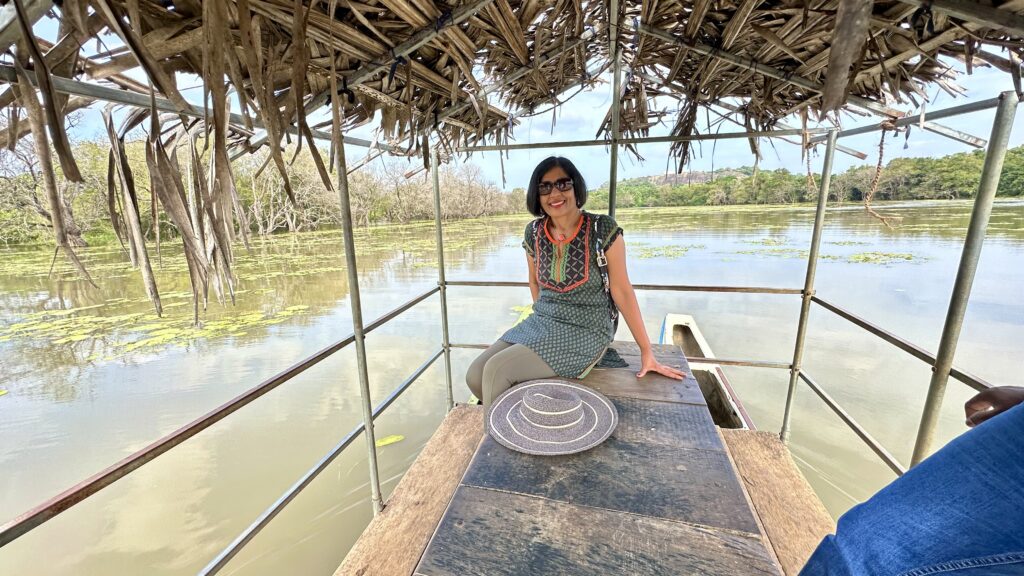
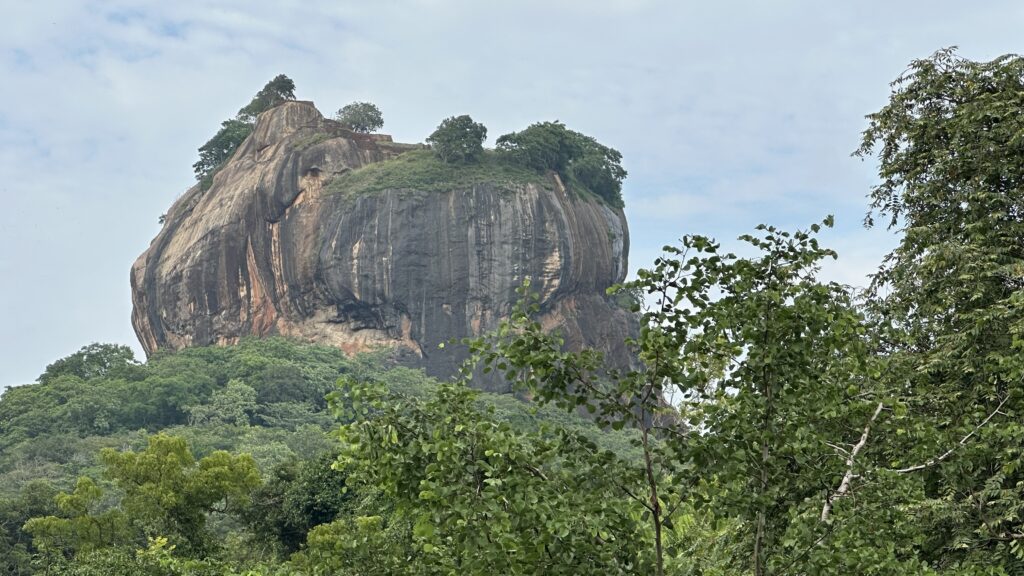
The lunch included many vegetable dishes, rice, lentil soup, coconut dish, a couple of traditional sweet dishes.
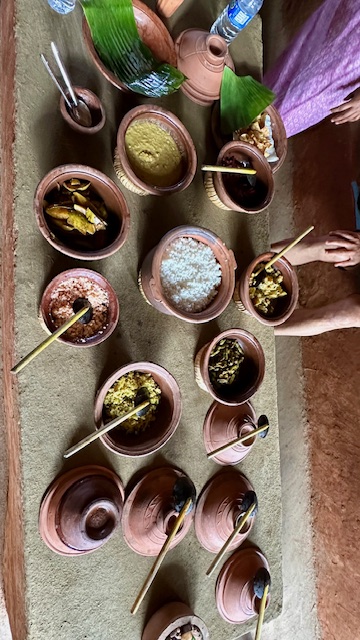
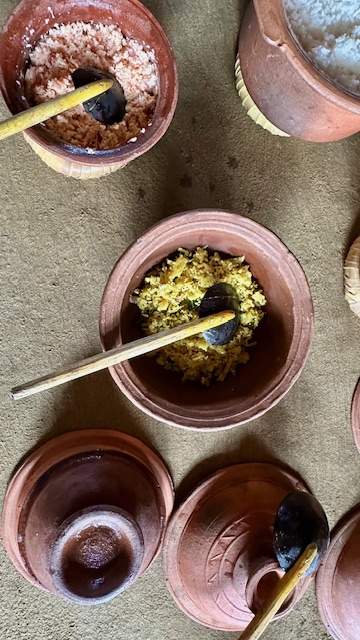
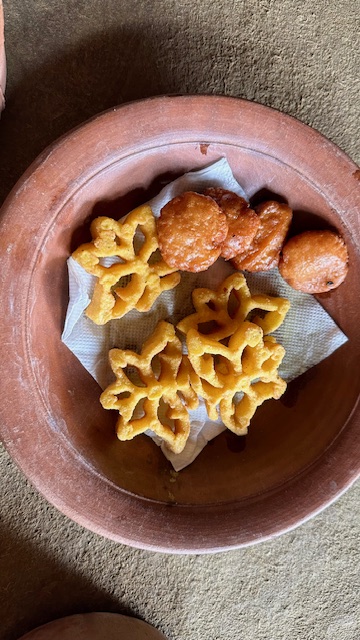
In my opinion, the bullock cart and boat ride can be skipped. Just do the farmhouse lunch.
Climbing Pidurangala Rock – Pidurangala is a massive rock formation, with a 360 degree view of the surrounding landscape and the best view of the famous Sigiriya or the Lion’s Rock. It is a moderately difficult climb with about 500 uneven steps and an elevation gain of 200m. Normally people climb this rock after 5pm to watch the sunset. We started the climb a little after 4pm and reached the top by 4:45pm. Before you start climbing the steps, you will pass by a temple which had a statue of Buddha in a relaxed position. There is another neat statue of reclining Buddha a little more than halfway up.
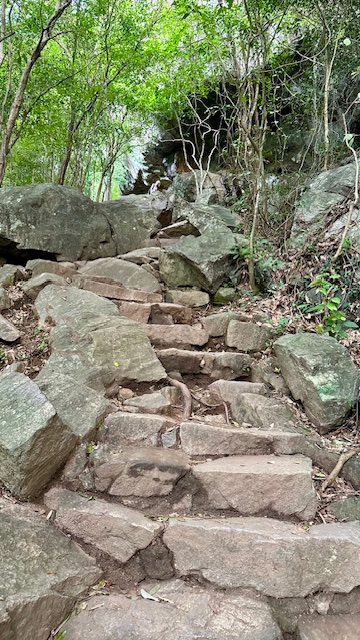
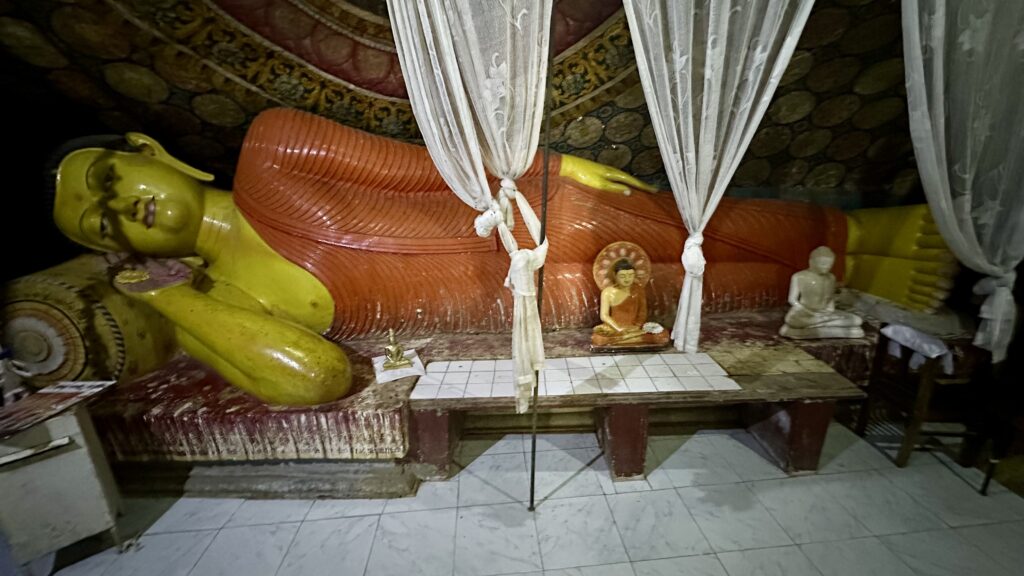
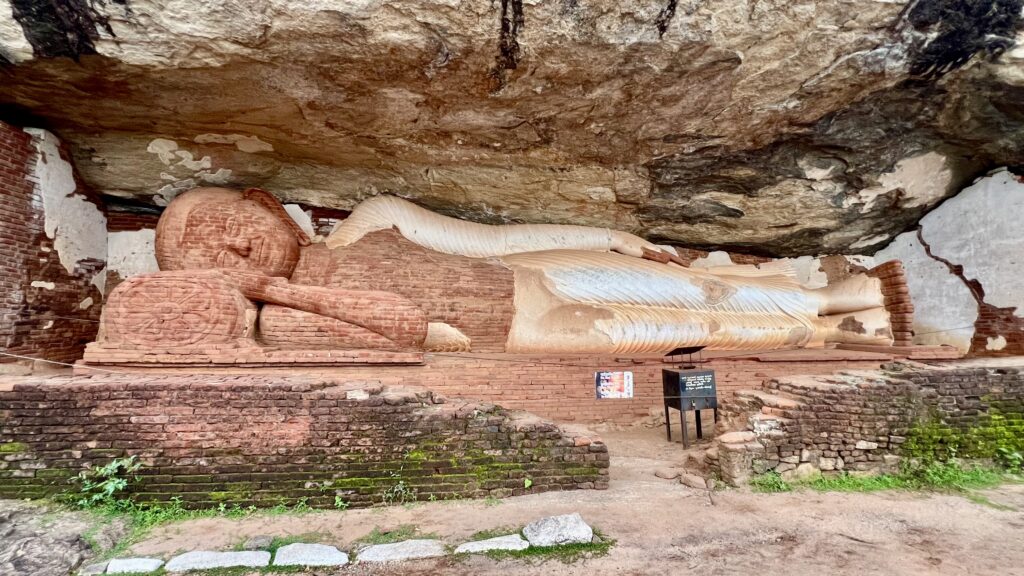
The climb can be challenging and the last 10 min of the climb is a scramble among the rocks to get to the top. The effort is totally worth it as you get a stunning and magnificent view of Sigiriya and the lush green surroundings from the top. You can climb a little higher to another section of the rock to get a different view of the Sigiriya and the surroundings. We spent about an hour at the top enjoying the view and taking pictures. The climb down was much faster and took about 20 mins.
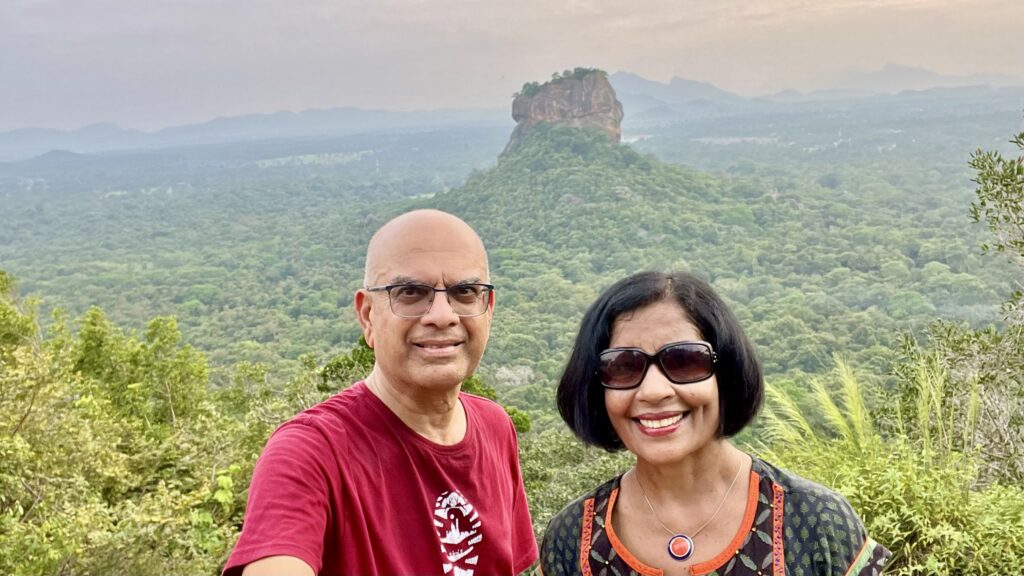
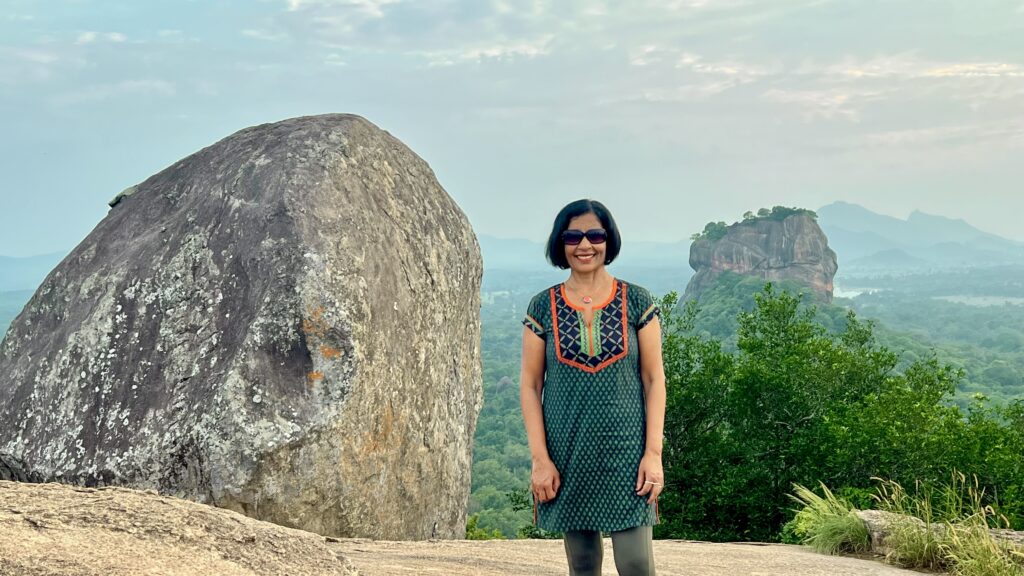
Polonnaruwa – On Day 3 of our stay in Sri Lanka, we drove to Polonnaruwa from our lodge in Habarana which took about an hour. A UNESCO World Heritage Site, Polonnaruwa was the second capital of Sri Lanka after the destruction of Anuradhapura in 993. Besides the monuments built by the Cholas, the site also comprises the monumental ruins of the fabulous garden-city created by Parakramabahu I in the 12th century.
Polonnaruva Museum – We first stopped at the museum on site which in addition to showcasing archaeological finds, also gives you information of all the points of interest here.
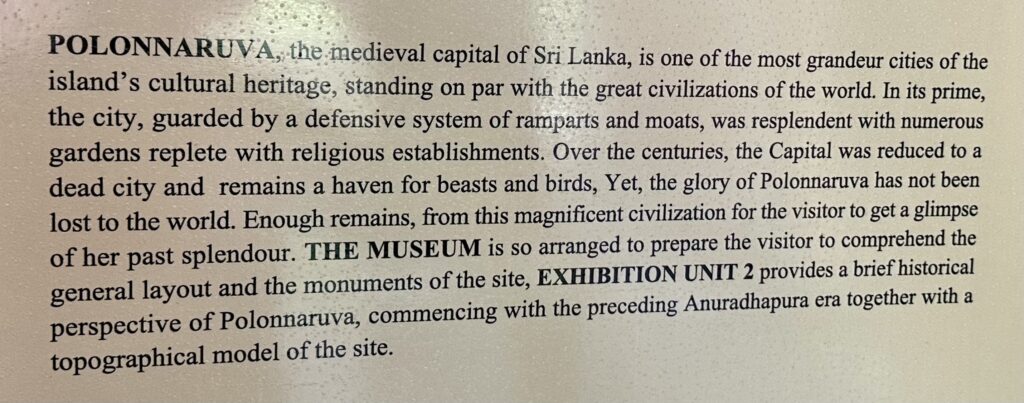
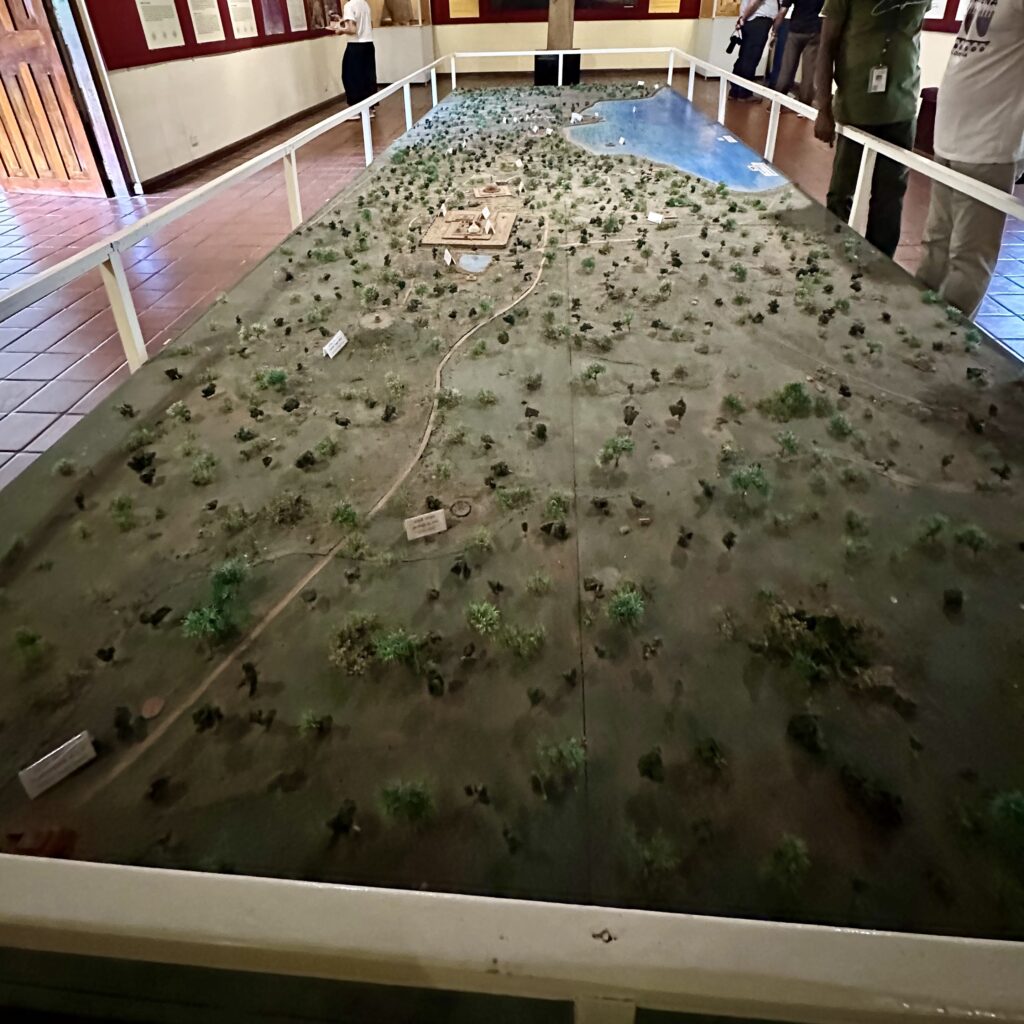
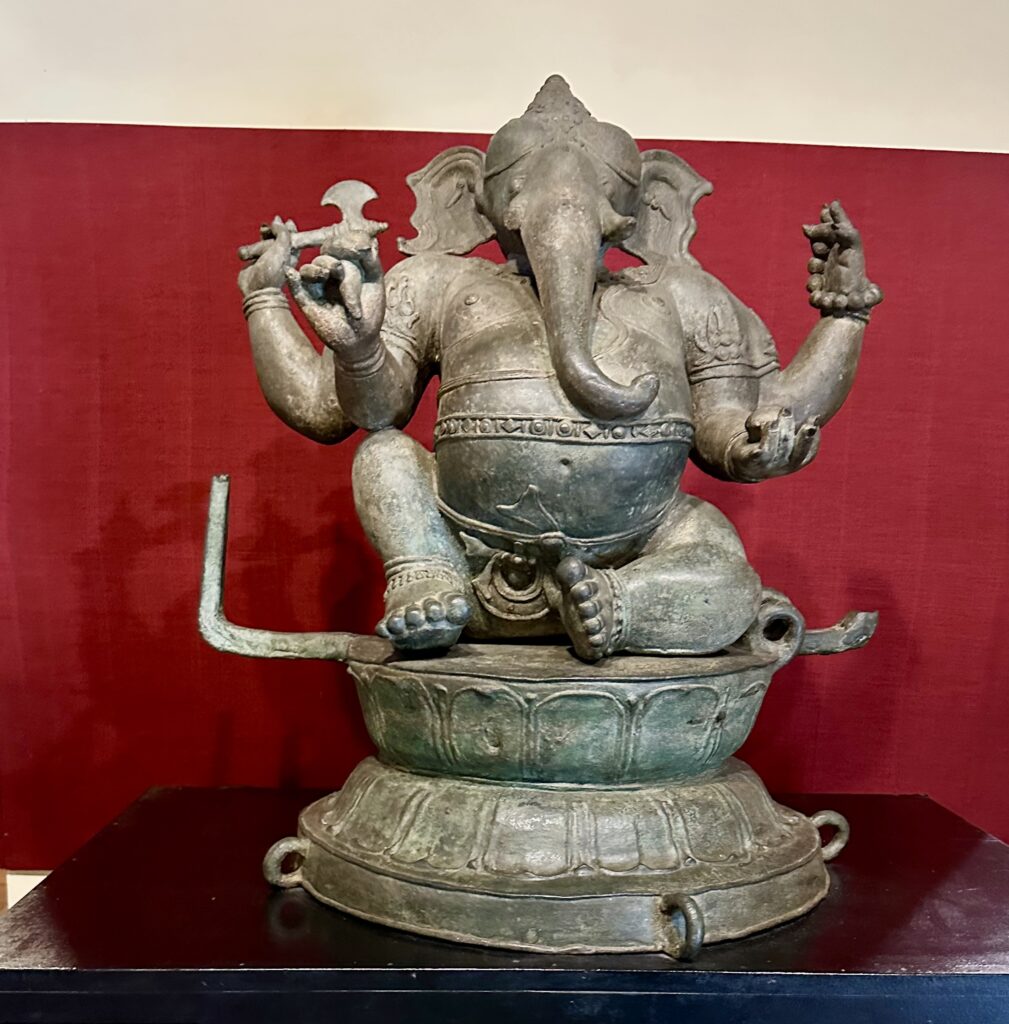
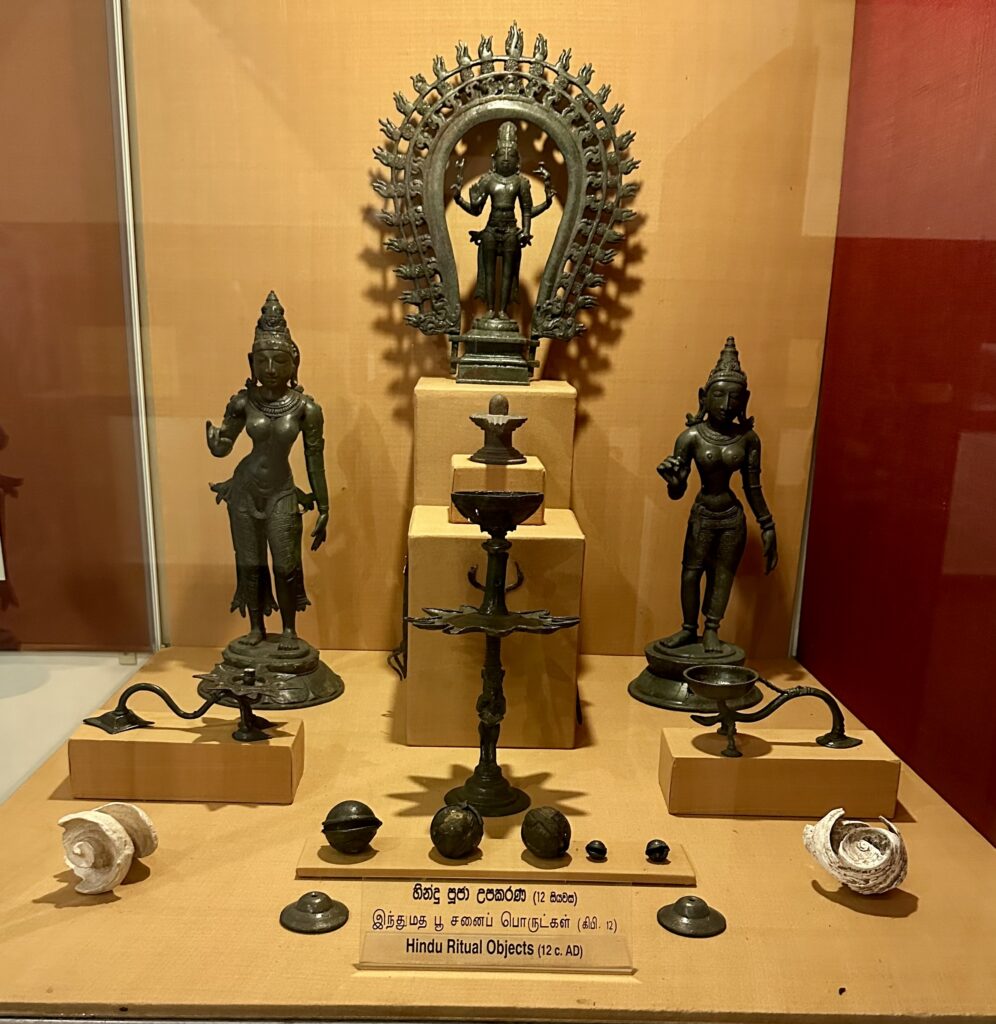
There are 5 areas spread around this site. It is a good idea to hire a guide and drive from one area to the next. Plan on spending at least 3 hours here even if you are not interested in ruins or history.
Polonnaruva, Royal Palace – We started at the site of Royal Palace, a 31-metre-long mansion, believed to have once stood over seven stories high, along with ruins of a Council Chamber(or Audience Hall) and the Royal Baths.
Royal Palace, Ruins of the Palace – Built in the 12th century AD, the Royal Palace was believed to have around 1,000 chambers. The prosperous kingdom, however, was subjected to constant Chola invasions in the 14th century, which in turn resulted in the kingdom to shift to the region of Ruhuna in the south of the island. Although no longer boasting its original grandeur, the palace is still a testament to the architectural craftsmanship of the ancient kingdom.
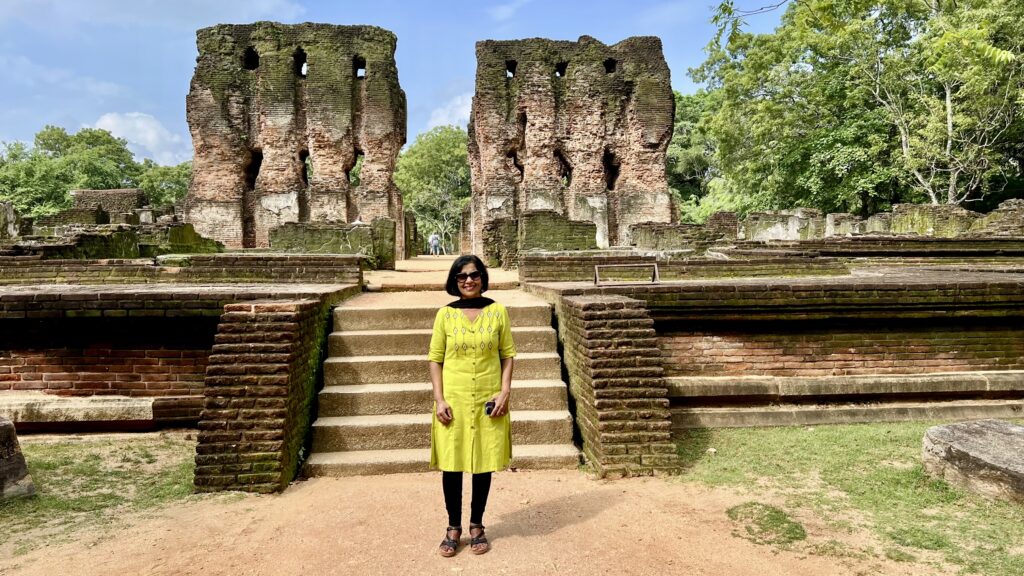
Royal Palace, Council Chamber – In front of the Royal Palace is the Council Chamber (also called the audience hall), built as a meeting place by King Parakramabahu. The Council chamber was built 75 feet long and 33 feet wide and the acoustics were good enough for the king to hear his ministers from across the chamber.
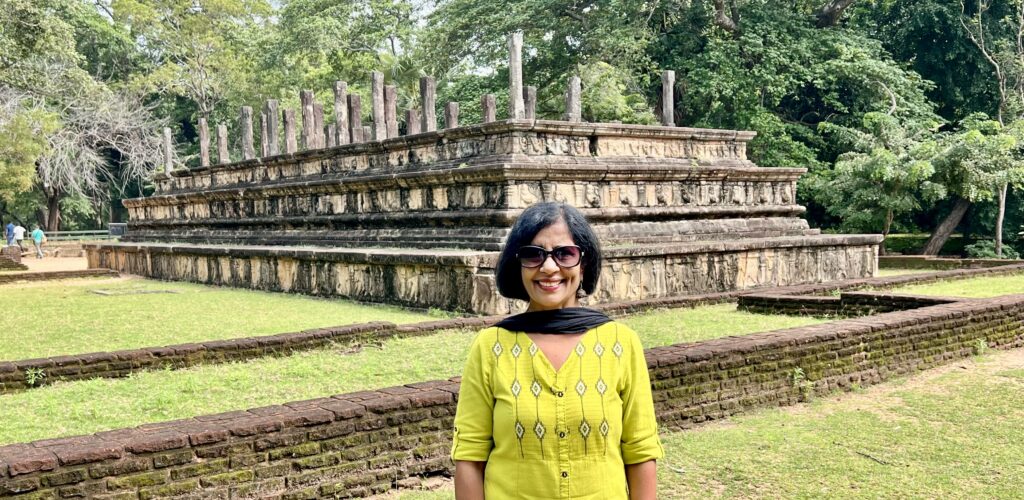
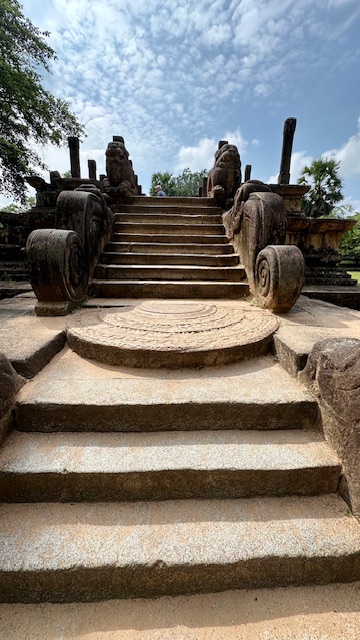
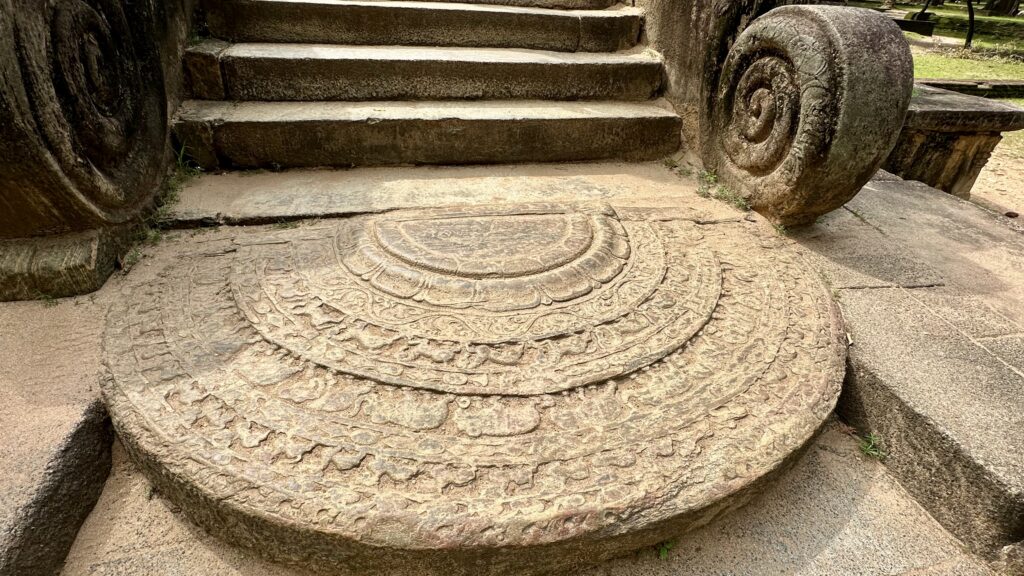
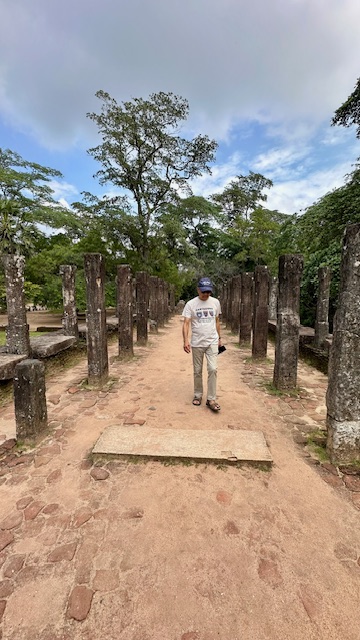
Royal Palace, Royal bath – This is a place where queens used to take bath and next to it you can also see ruins of changing rooms. It also has stairs leading to the water.
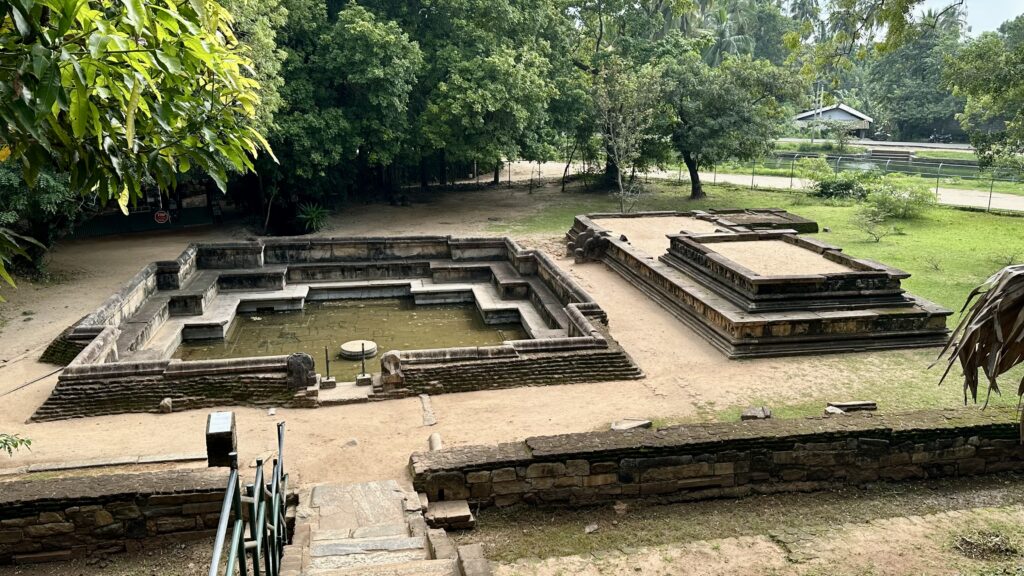
Polonnaruva, Quadrangle – This was the next section we visited and is the most concentrated area of ruins at Polonnaruwa. At its heart lies the Vatadage, one of the most beautiful buildings in Sri Lanka. This is a breathtaking circular relic house with a diameter of 18m. Exquisite guard stones, moonstones, balustrades, and carved stone steps adorn the two terraces leading up to the main shrine in the middle of the circular chamber. In the sacred chamber, four Buddha statues face the four cardinal directions. Behind the Buddhas is a small Stupa where the Sacred Tooth Relic of the Lord Buddha was housed, following the shift in the capital from Anuradhapura in the 11th century.
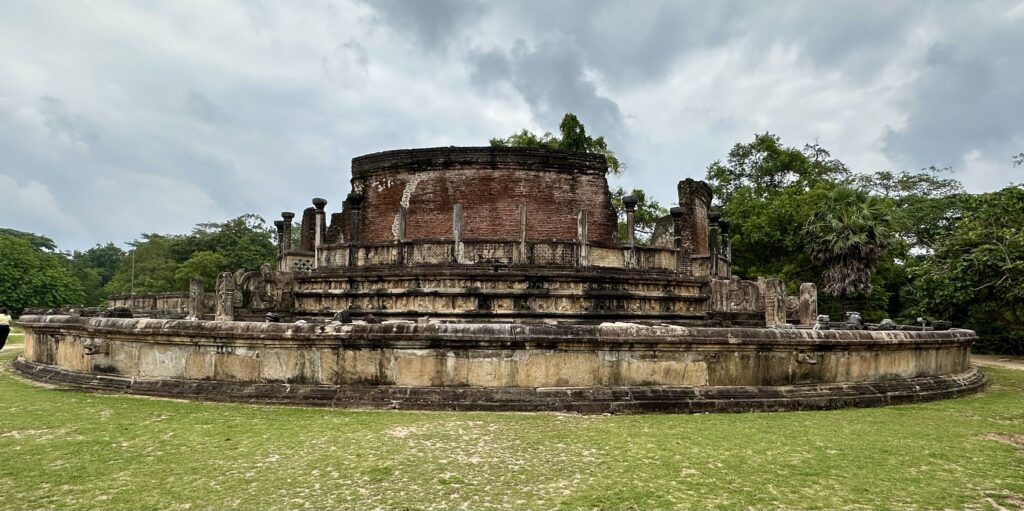
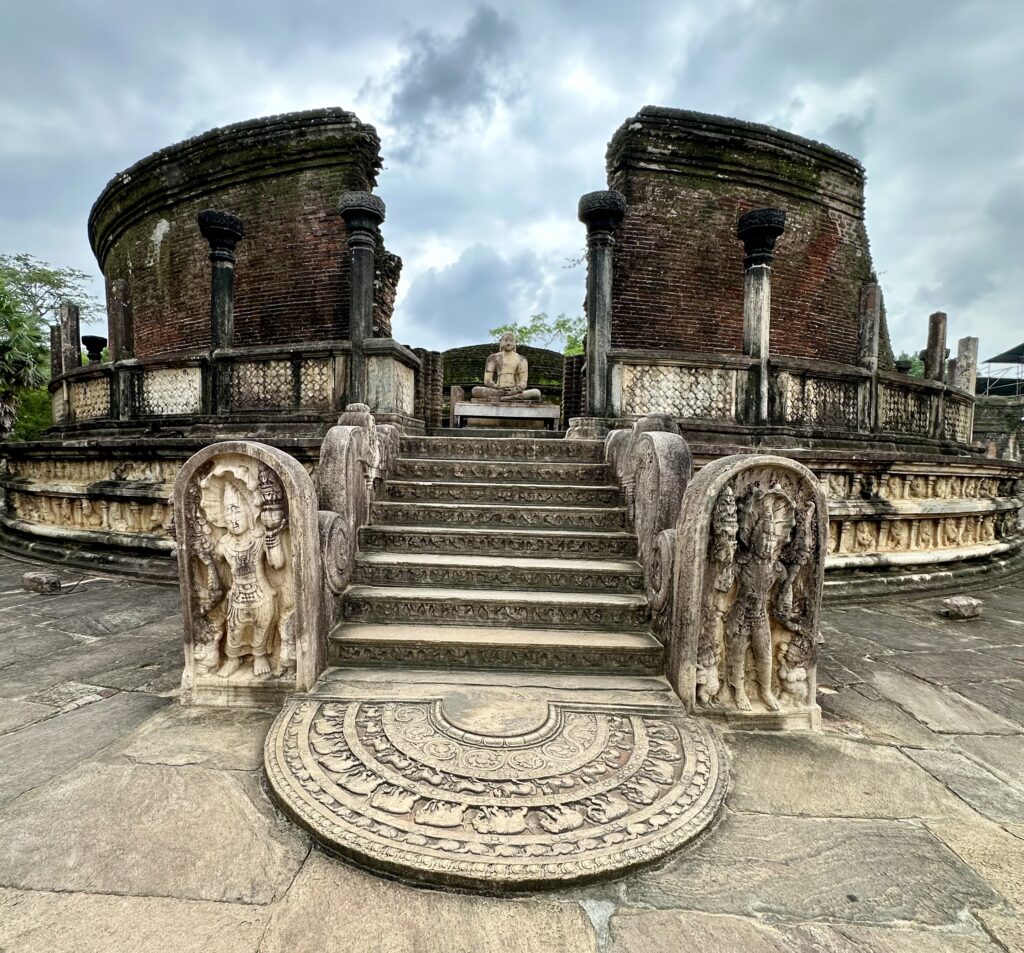
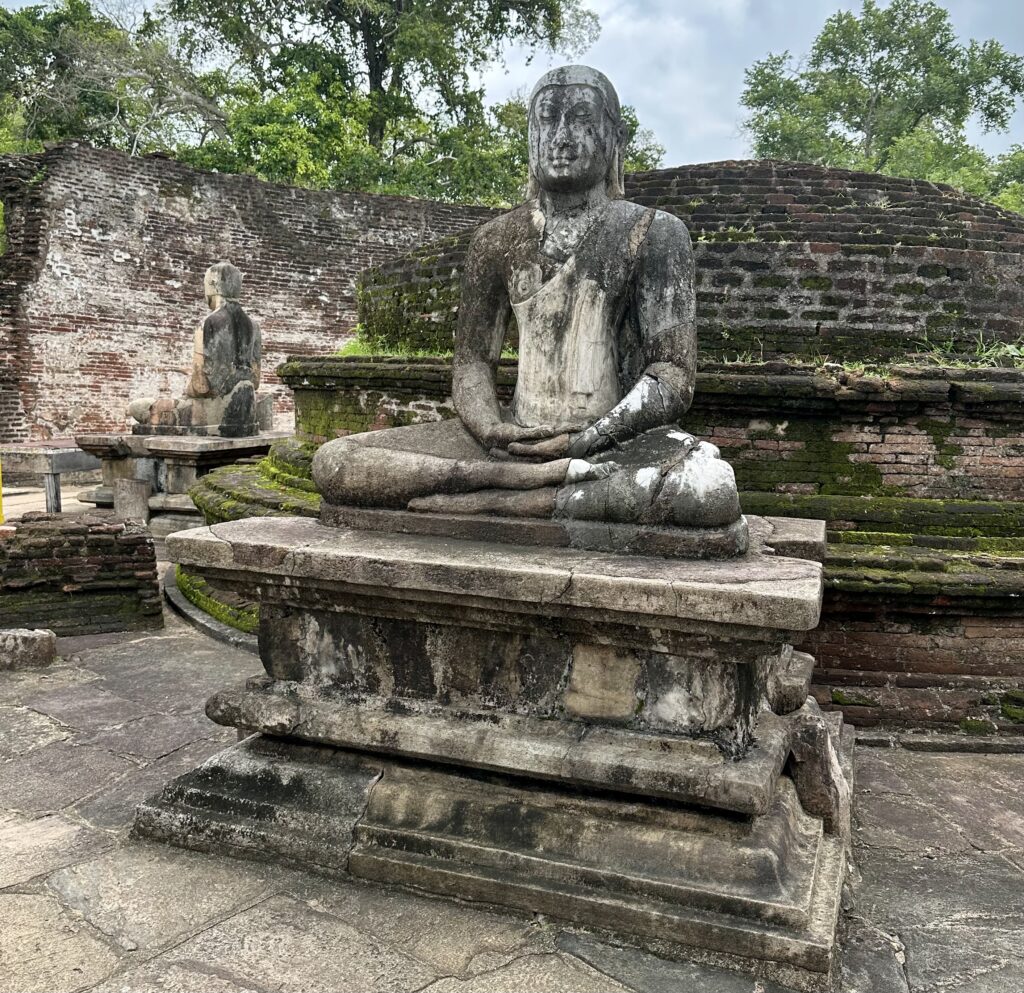
Polonnaruva, Quadrangle – Satmahal Prasada (seven-story tower) – You will see this 12th century step pyramid as soon as you enter the Quadrangle area.
It is believed to be a Stupa because it is in a Buddhist environment. Its architecture is often compared to the Stupa in Thailand or Cambodia. It is believed that King Parakramabahu 1 (1123–1186) built this seven-story tower.
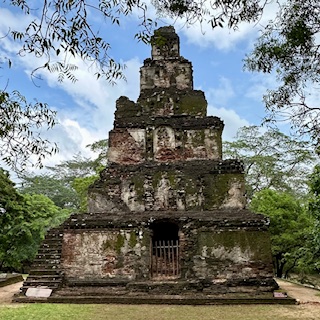
Polonnaruva, Quadrangle – Galpota Slab Inscription – Also called the Stone Book, it is a large stone slab with an inscription that describes the rule of King Nissanka Malla. It is 8.2 meters long and 1.4 meters wide, and weighs about 15 tons. The inscription is written in three columns on the upper surface of the slab, with 72 lines and over 4,300 letters. The English translation of the inscription on the slab is displayed on a board nearby.
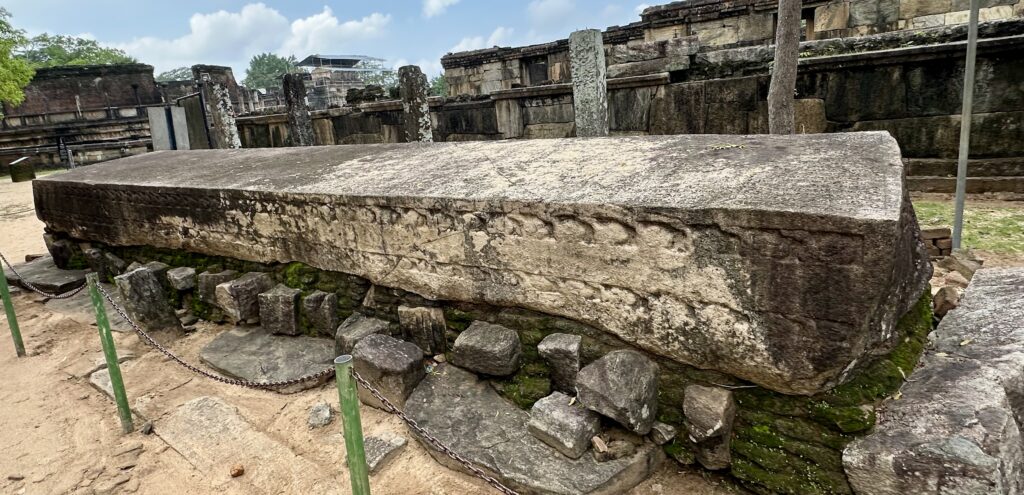
Polonnaruva, Quadrangle – Nissankalatha Madapaya – King Nissankamalla(1187-1196 AD) used this pavilion to listen to Pirith, recital of Buddhist scriptures. The stone pillars that take the shape of lotus stalks with flower as the capital and supported a roof of unknown shape. A latticed stone fence surrounds the pillared pavilion. In the center is a small stone cut Stupa, having a truncated top perhaps to receive the relic casket during pirith chanting.
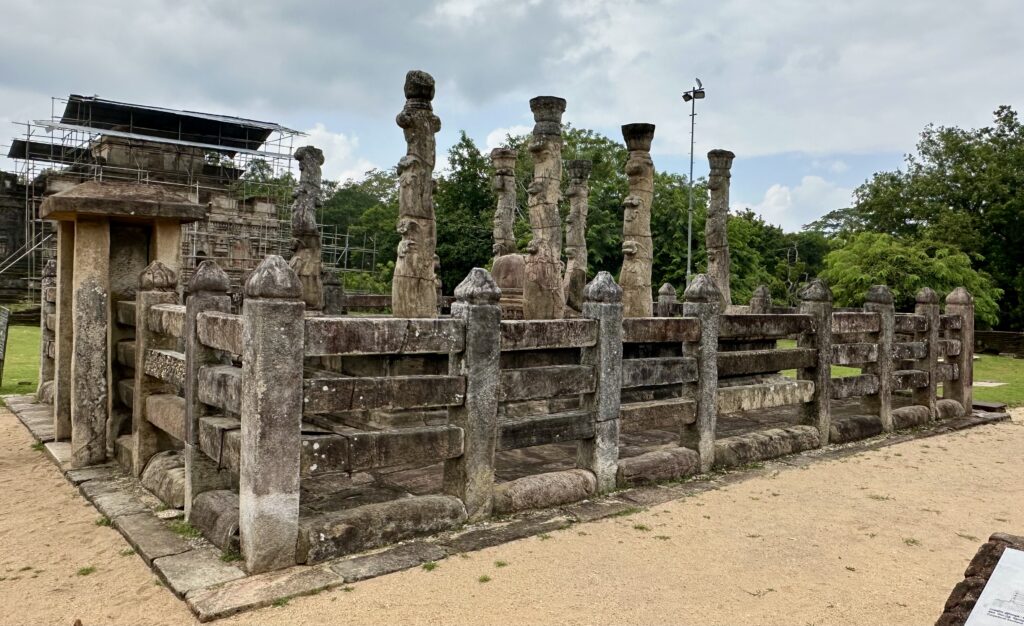
Polonnaruva, Quadrangle – Thuparama – At the southern end of the Quadrangle, the Thuparama Gedige is the smallest gedige (hollow Buddhist temple with thick walls) in Polonnaruwa. It is the only one with its roof intact, supported by corbel arch-style supports. The inner chamber contains four beautifully executed standing Bodhisattva statues. The roof is completely made out of bricks and almost the whole building has survived over 900 years miraculously. It is thought that this was built by a minister of King Parakramabahu (1153-1186) called Mahinda to house the tooth relic.
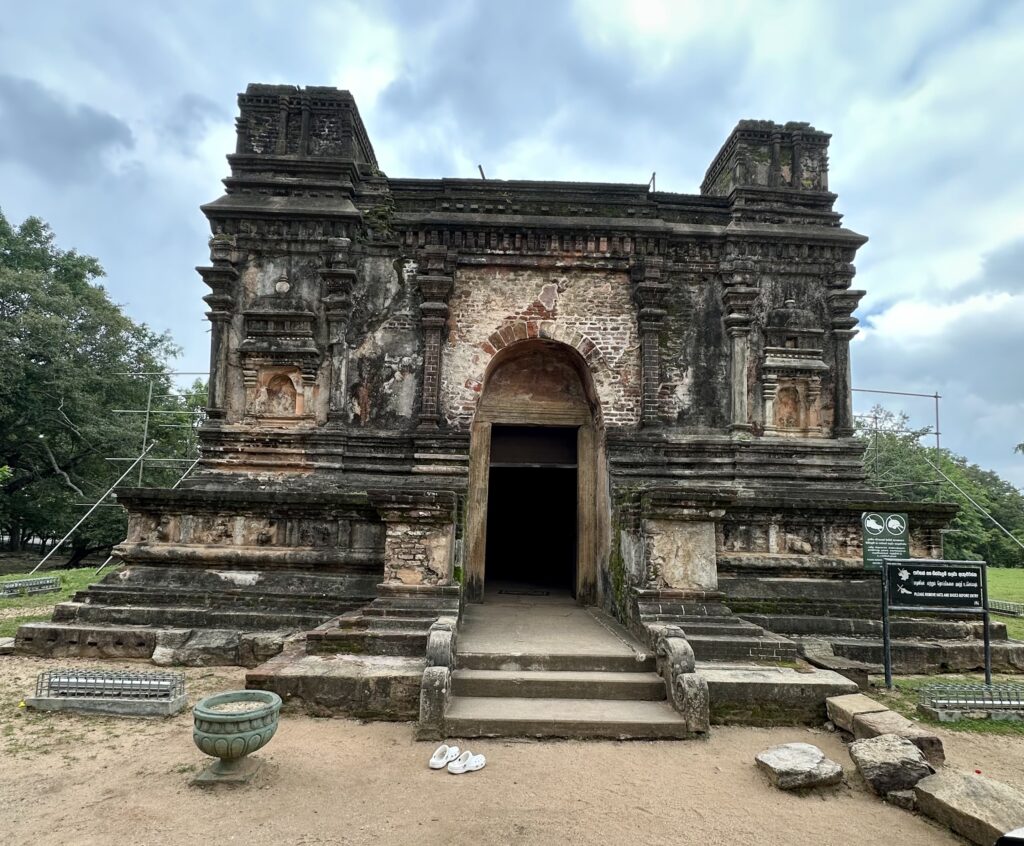
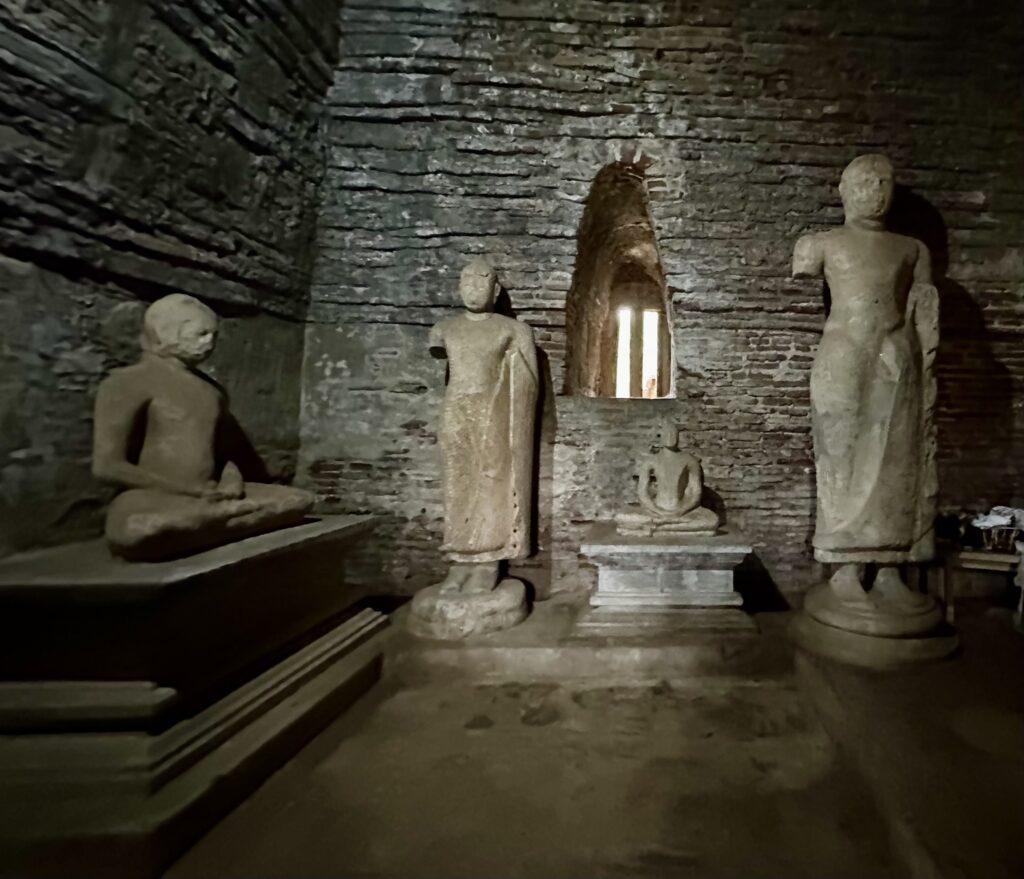
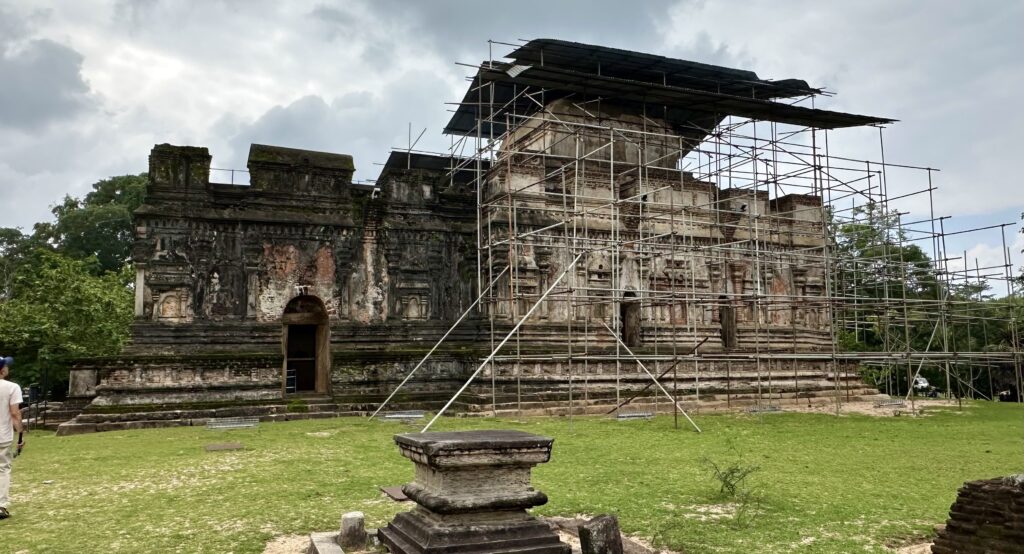
Polonnaruva, Shiva Temple – We made a quick 10 min stop here before proceeding to the next area. The Shiva temple is the oldest building on the site, having been constructed from brick. Dedicated to god Shiva, it is one of a handful of Pandyan-era Hindu shrines in Polonnaruva.
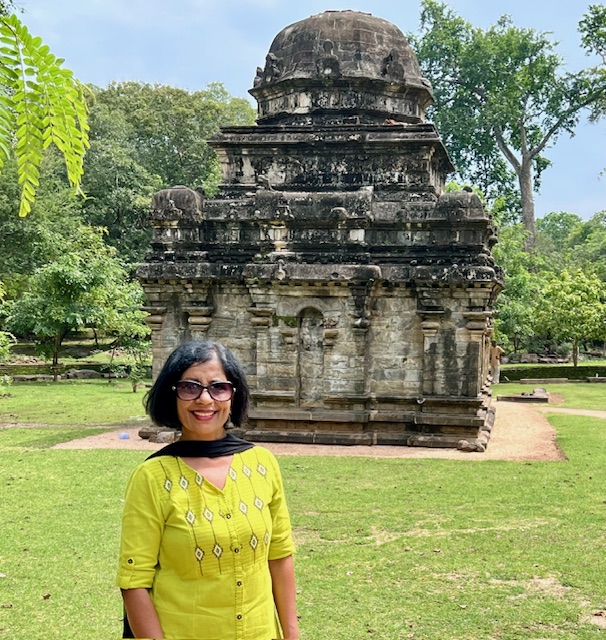
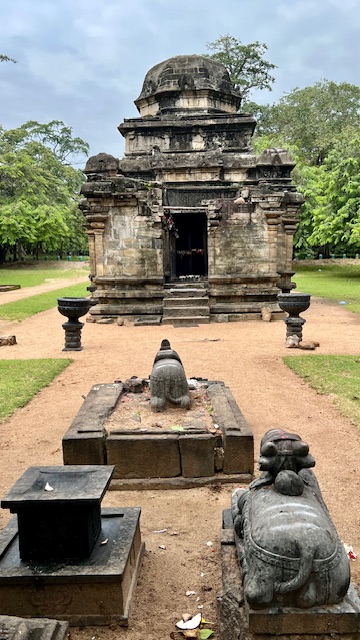
Polonnaruva, Rankoth Vihara – This magnificent Stupa was our next stop in Polonnaruva. This is the 4th largest Stupa in Sri Lanka. Built by the Nissanka Malla(1187-1196) the Stupa of Rankoth Vehera is in the center of a large square terrace. There are four entrances to the yard with four cardinal points. You can walk around the Stupa but before you do so, remove your shoes at the bottom of the stairs.
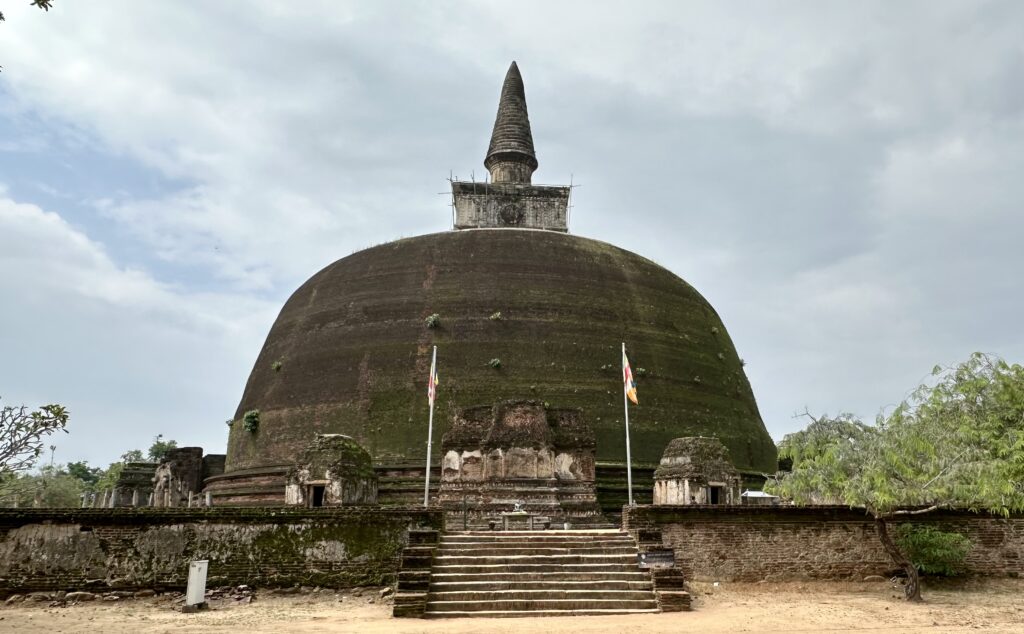
Polonnaruva, Alahana Pirivena – Founded by Parakramabahu 1 in the 12th century, this ancient monastic complex was a thriving center for Buddhist learning and meditation. The name ‘Alahana Pirivena’ suggests (and has been confirmed by archaeologists) that the site had been a former cremation ground. Archaeologists have found that the monastery consisted of many separate units demarcated by smaller boundary walls with small entrance doorways. Each unit had its own living cells, and several of them seem to have shared a common bath house, refectory and other such facilities for monks.
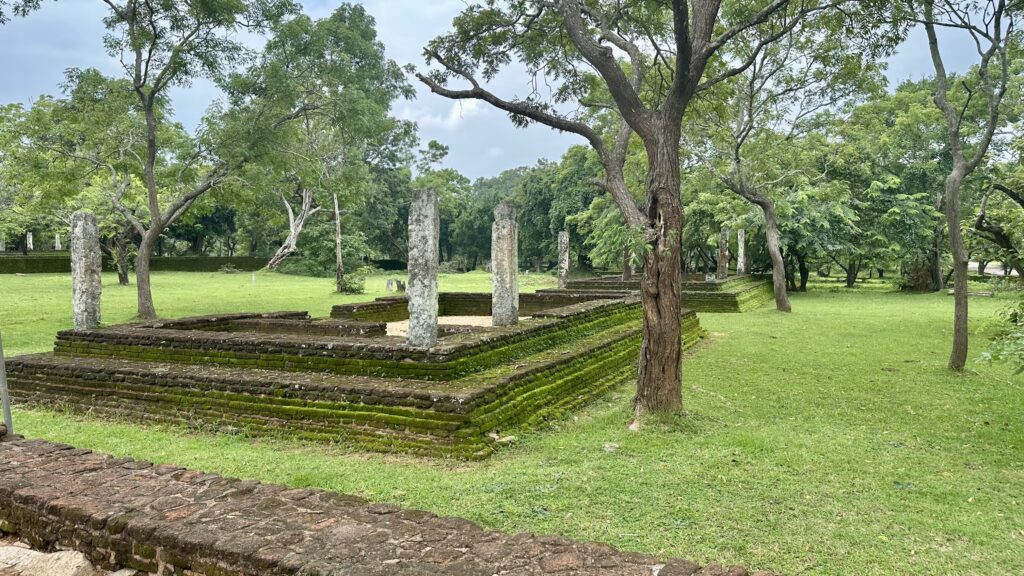
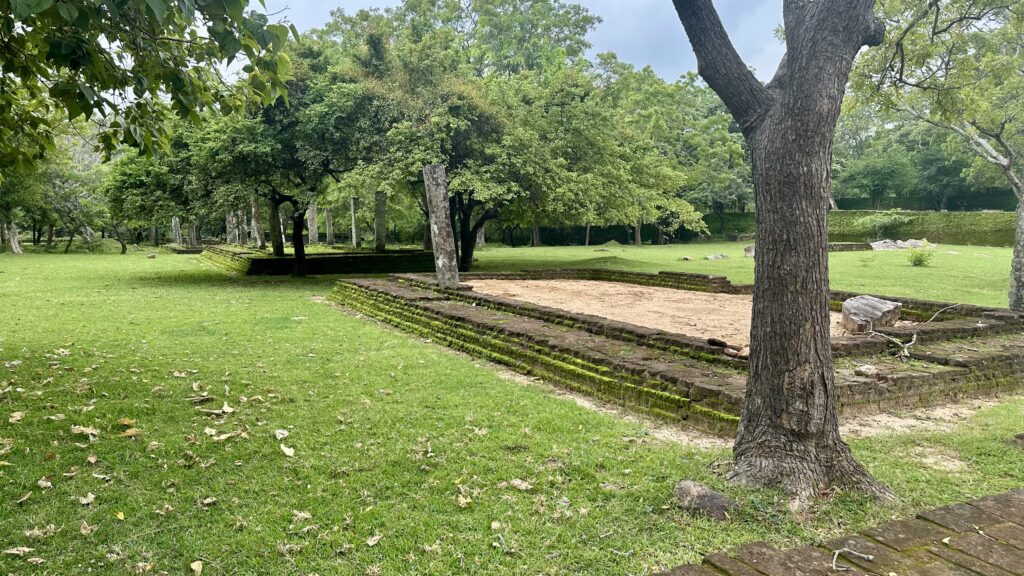
The monastery complex also houses the ruins of some impressive dagobas – the Menik Vihara, and the lime-plastered Kiri Vihara.
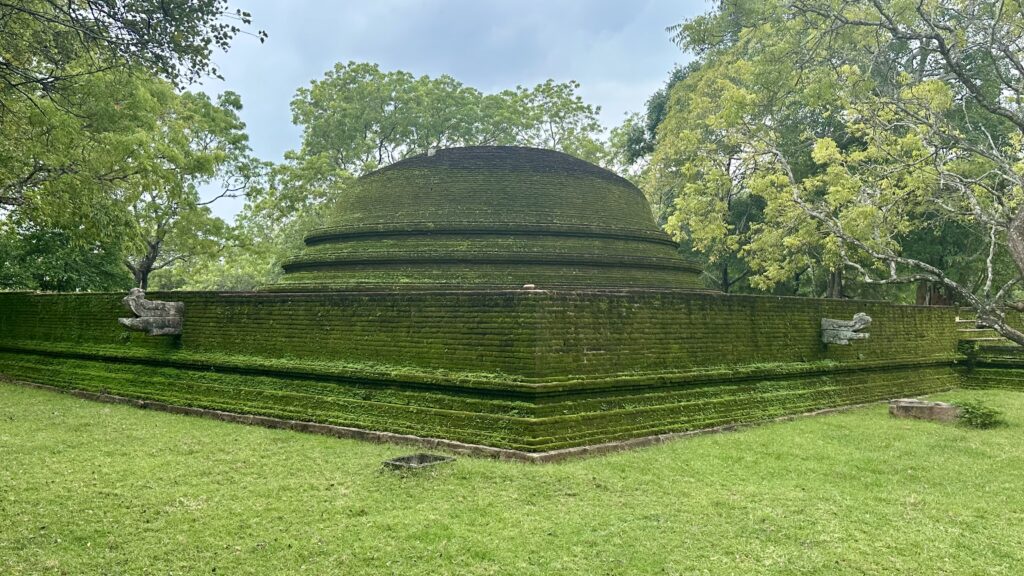
Kiri Vihara – This an 80 feet tall, whitewashed, Stupa was constructed in the 11th century AD, by King Parakramabahu’s queen, Queen Subhadra. Its original name was Rupavathi Chaitya but was changed to Kiri Vihara, which means ‘white Stupa’, because of its lime washed coating.
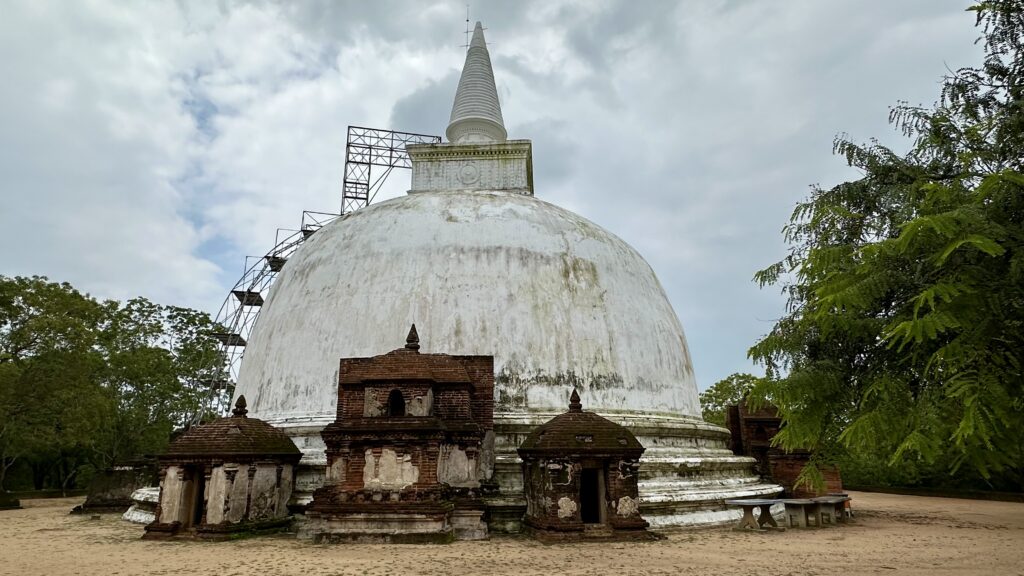
Polonnaruva, Lankathilaka – This impressive cathedral-like shrine whose walls soar up to an incredible 17 metres, sits within the Alahana Pirivena, and is home to a huge headless Buddha carved out of the towering end wall. The 41 feet damaged Buddha statue inside is made out of clay bricks. At the entrance to the Lankathilaka building are two massive pillars made from bricks. The tallest one is 58 feet in height. There is a pair of Guard Stones, also known as murugala at the base of the steps leading to the temple which is a common feature in ancient Buddhist temples.
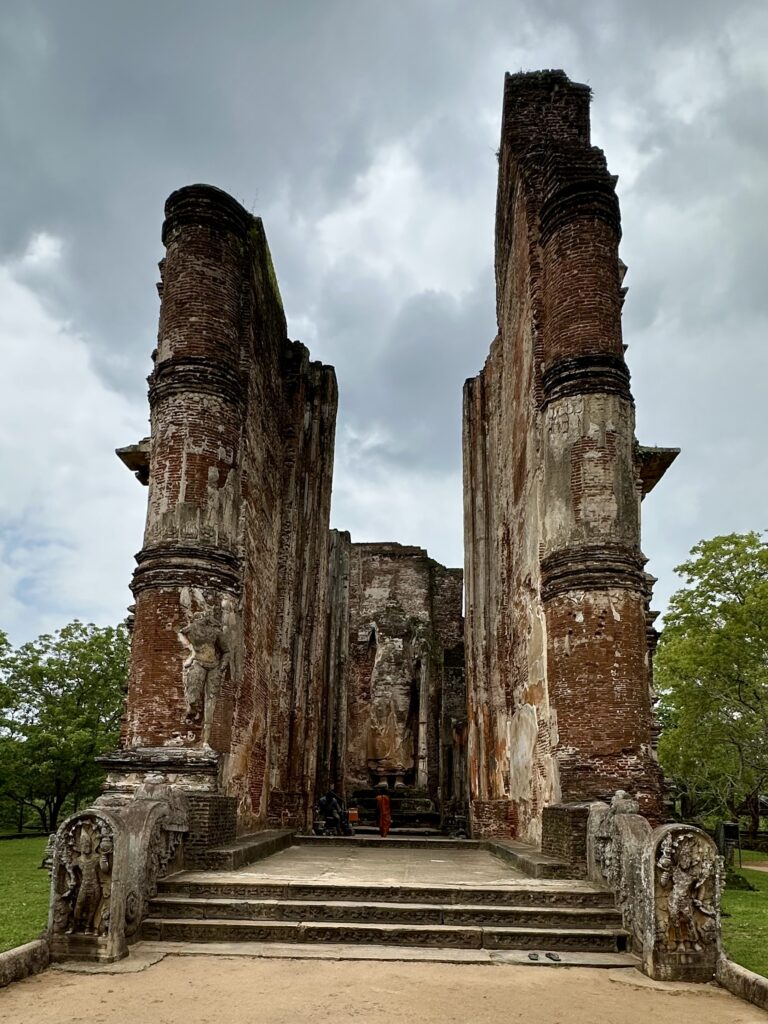
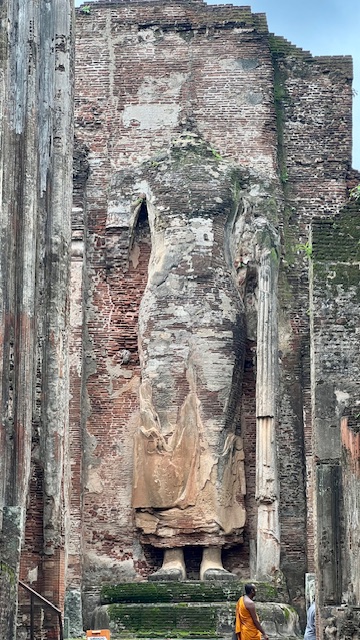
The building is completely made out of bricks and the outer walls are covered with elaborate designs and carvings.
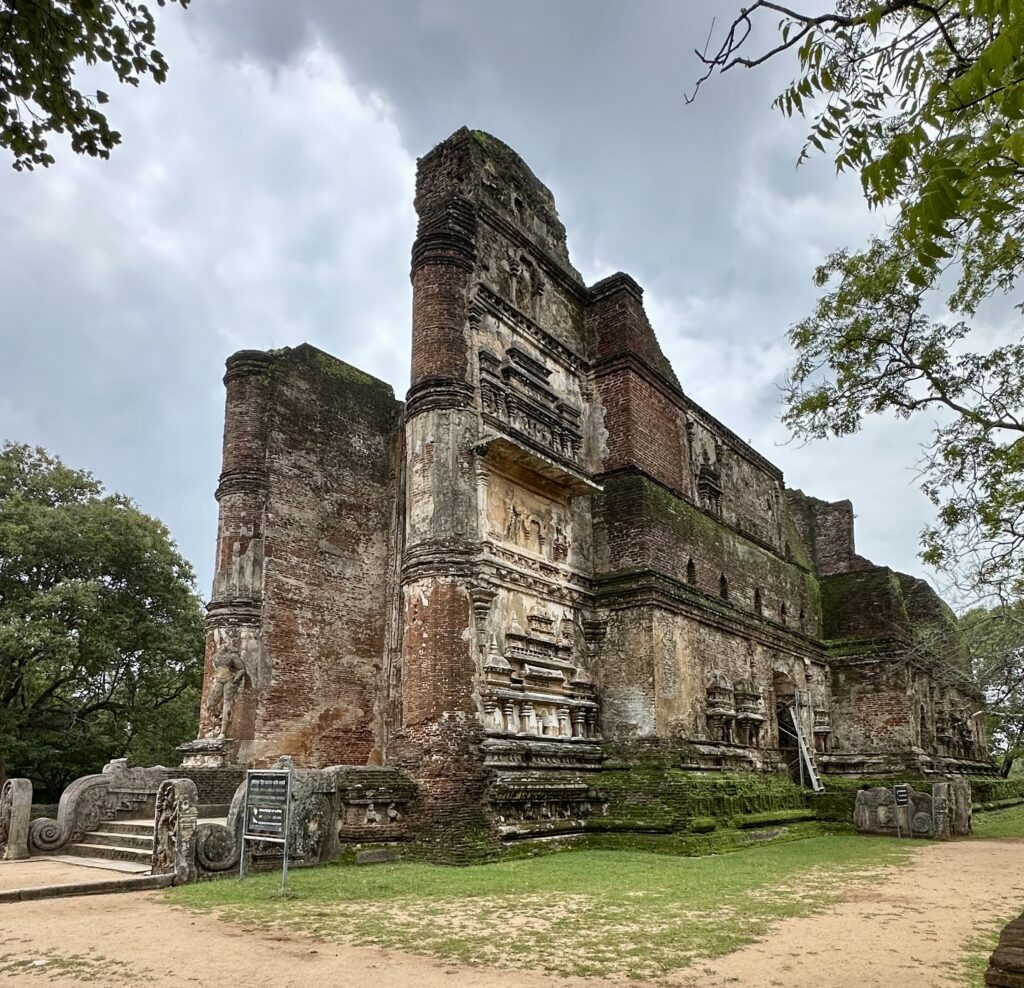
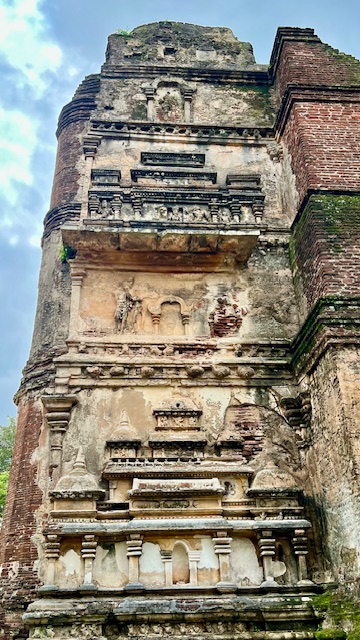
Polonnaruva, Gal Vihara – To the north of the site lie the serene statues of Gal Vihara. The four Buddhas defy the years as they are still in incredible condition. Carved out of one slab of granite, the natural marbling of the stone winds its way through the graceful carvings.
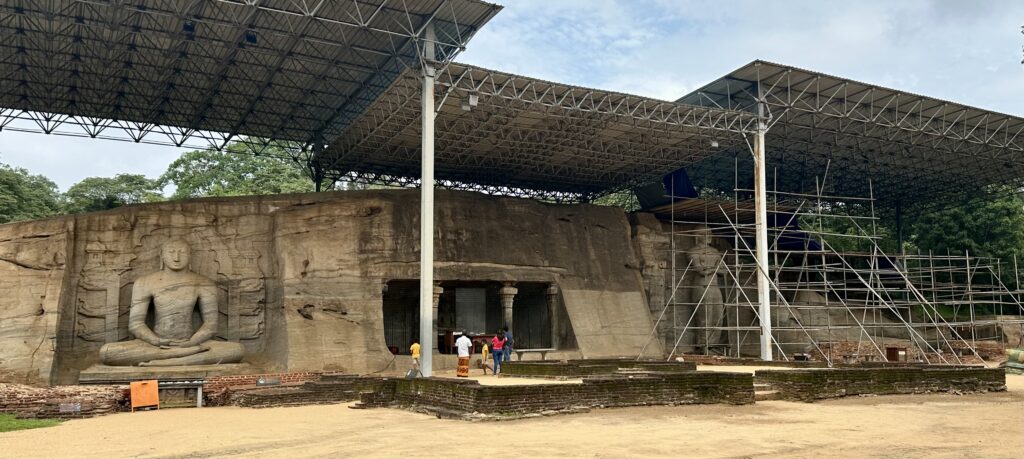
Farmhouse Lunch – We then stopped for another farmhouse lunch. Amazing spread with lots of vegetable dishes. Coconut milk is used in most of the liquid dishes.
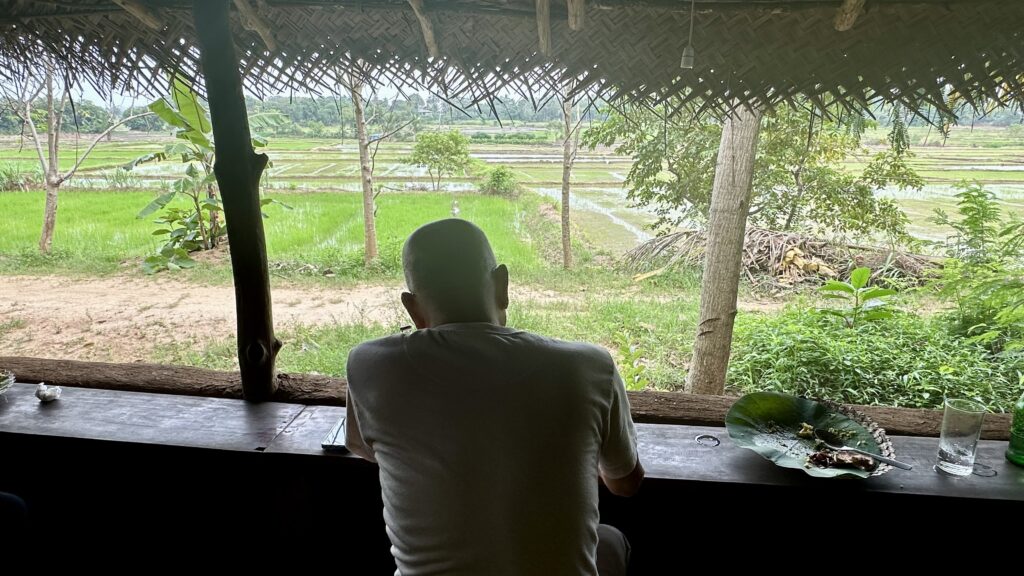
Minneriya National Park – In the afternoon, we went to Minneriya Safari park to see elephants in their natural environment. This place is home to the world’s largest known gathering of Asian elephants. We were quite surprised to see all the safari jeeps stopping so close to the elephants and blocking their path.
We got a good view of the elephants and some great pictures. The whole area is green and beautiful and there are a couple of places where you can get off the jeep and take a walk up to a viewpoint.
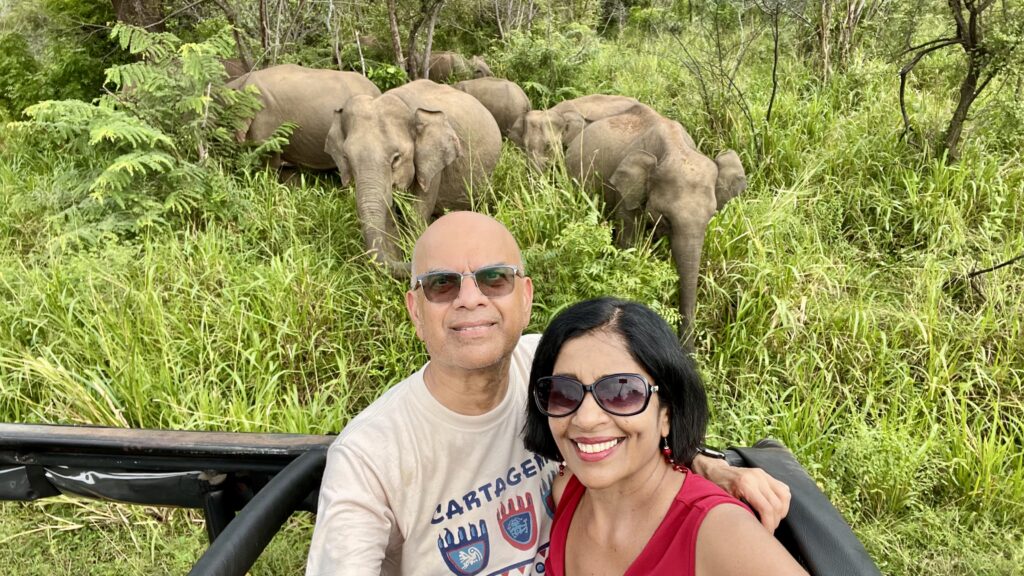
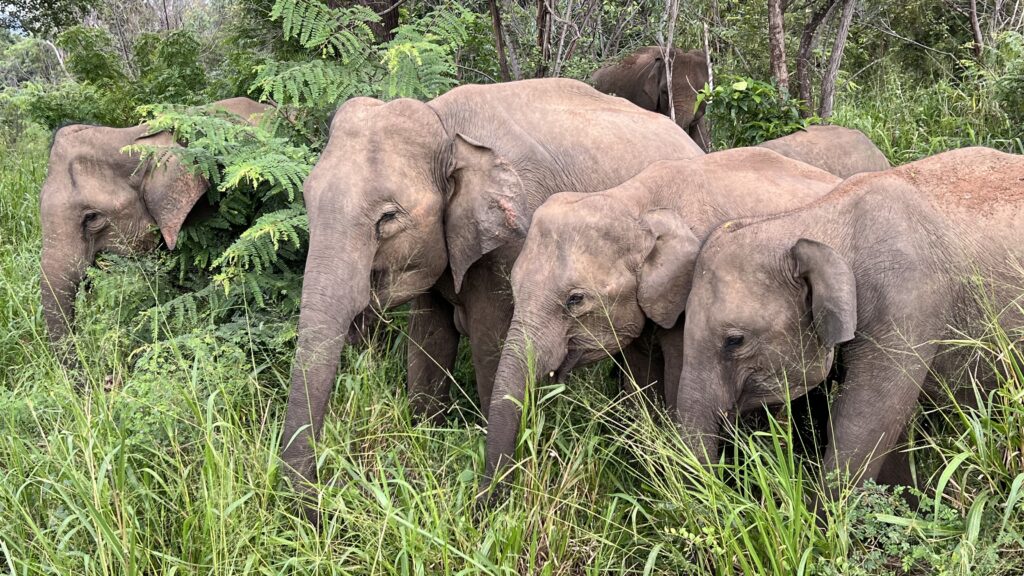
Climbing Sigiriya – Another UNESCO World Heritage Site, Sigiriya Rock is an ancient rock fortress known for its massive column of rock that reaches nearly 200 meters high. The site dates back to the reign of King Kasyapa (477-495 AD), who chose this site as his new capital. He built his palace on top of this rock and decorated its sides with colorful frescoes. On a small plateau about halfway up the side of this rock he built a gateway in the form of an enormous lion. The name of this place is derived from this structure; Siṃhagiri, the Lion Rock. There are about 1200 steps to climb. There are stone steps at the beginning of the climb followed by metal when you reach the plateau halfway up.
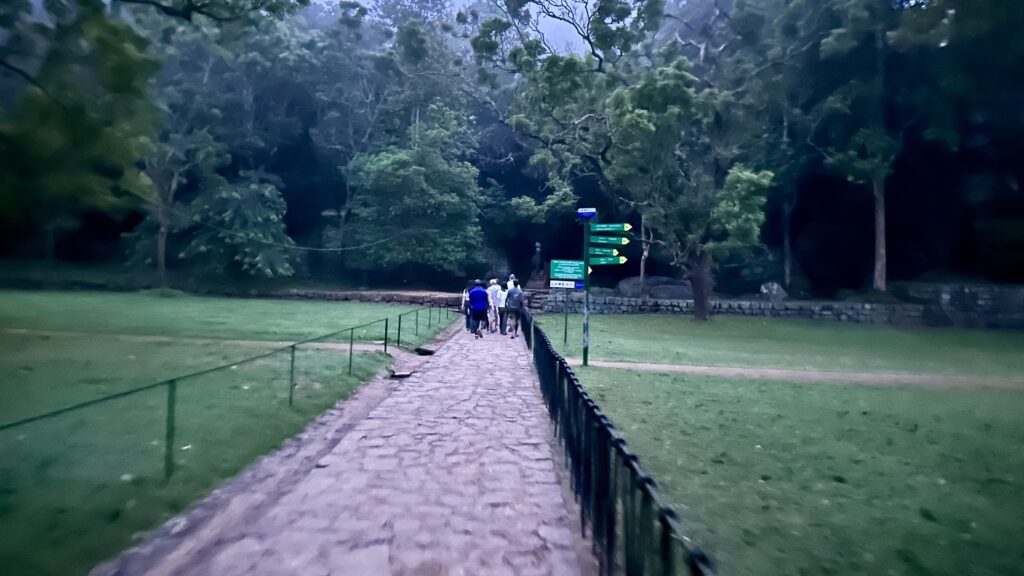
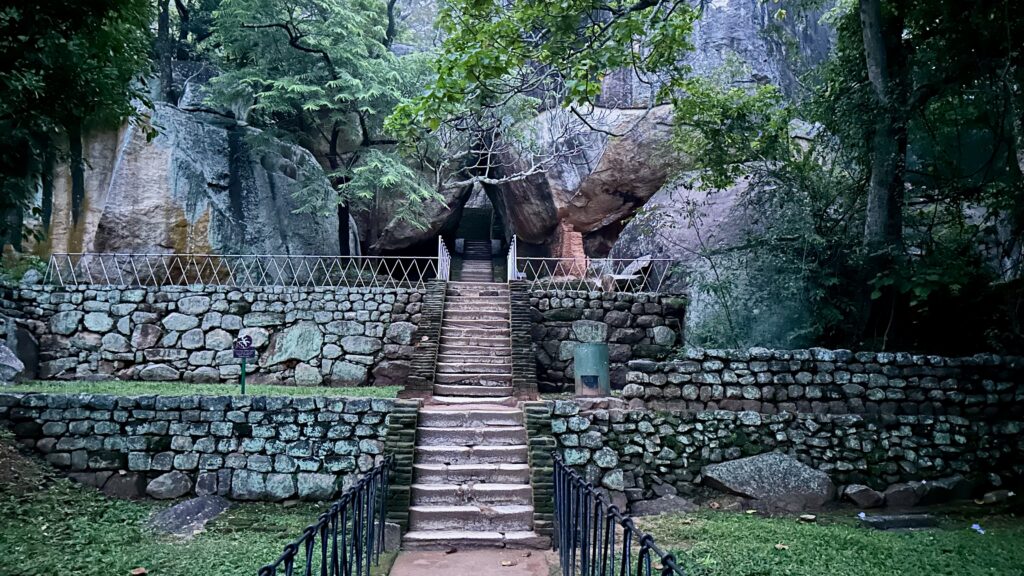
At a plateau near the top, you’ll come across a giant carved lion, which was once the gateway to King Kasyapa palace. A switchback staircase winds through this carved lion, until you reach the top of Sigiriya Rock. There are water fountains and benches to relax at this point of your climb. At the top, you will walk into the East Palace Complex.
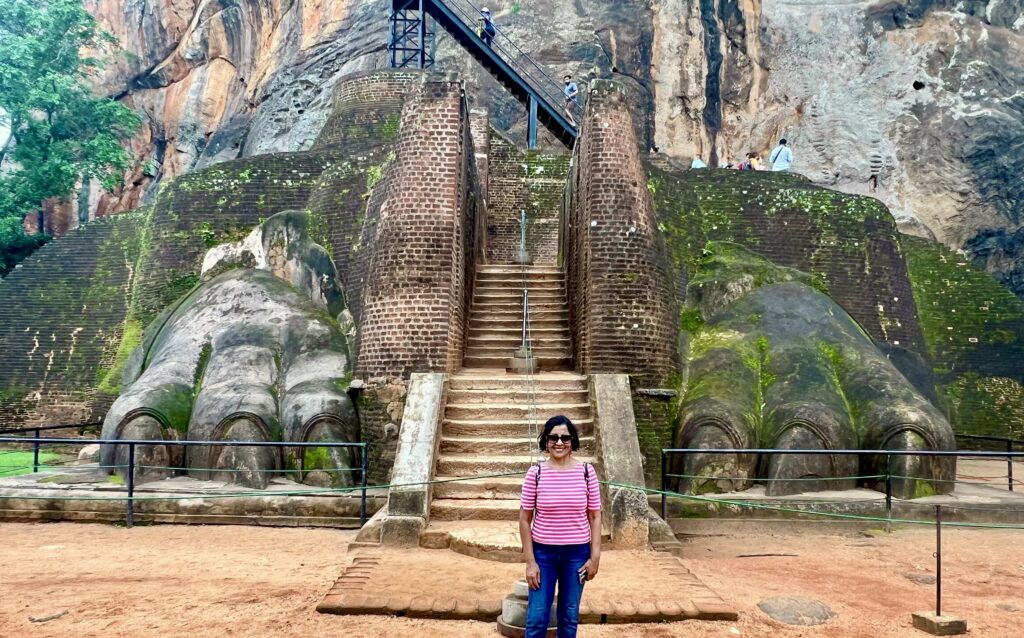
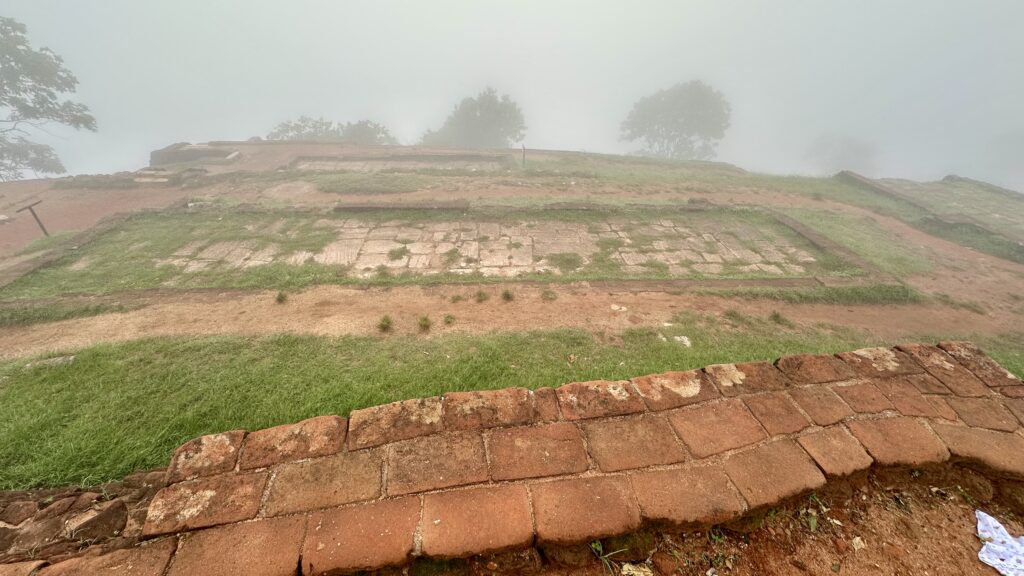
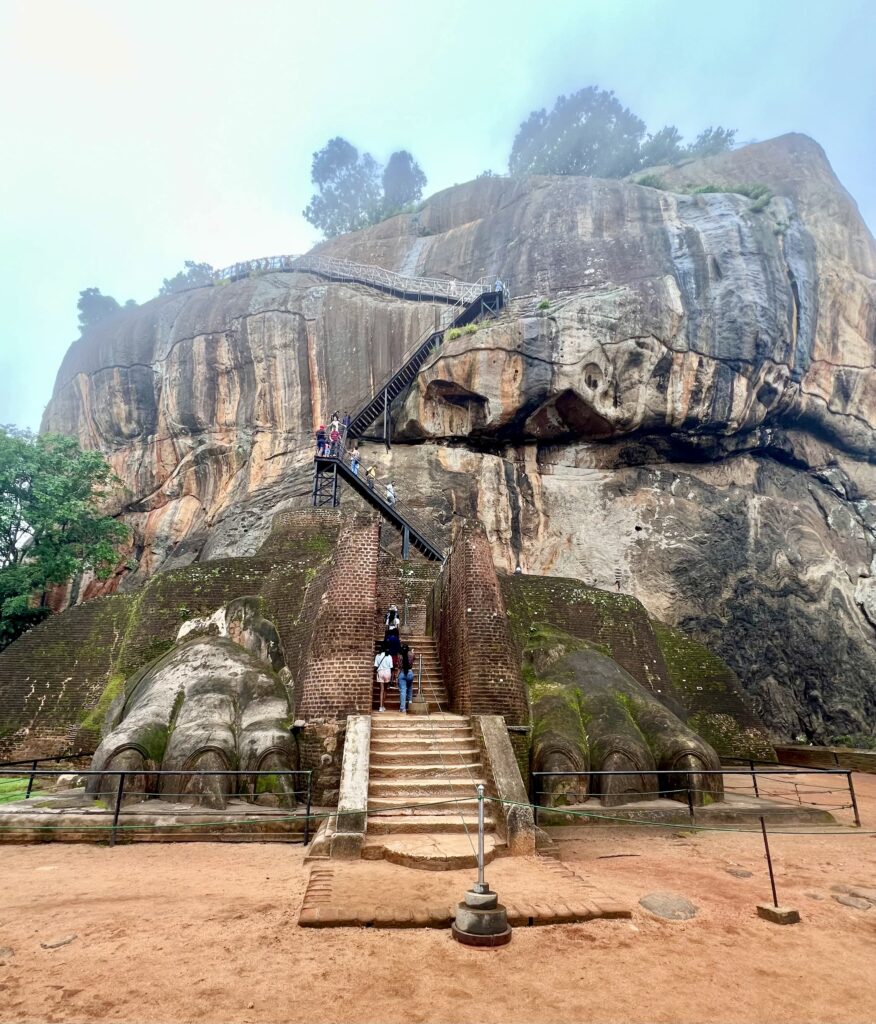
It took us about 45 minutes to reach the top. There was a lot of fog at the top and visibility was low. We relaxed for 10 minutes before we started exploring the ruins of the ancient palace. The sun slowly started peeping out of the clouds and the visibility improved. The ruins itself is spectacular and the view from the top of the surrounding landscape was amazing too, in spite of the fog. You can divide this fortress into 2 sections, the Royal Palace at the top and the massive terraced Royal Garden at the lower level.
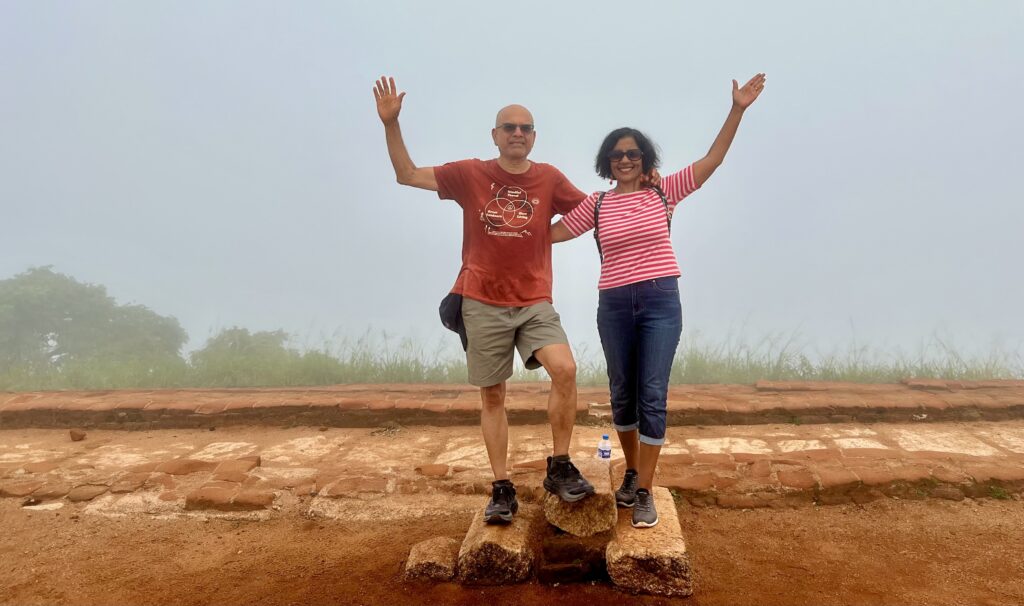
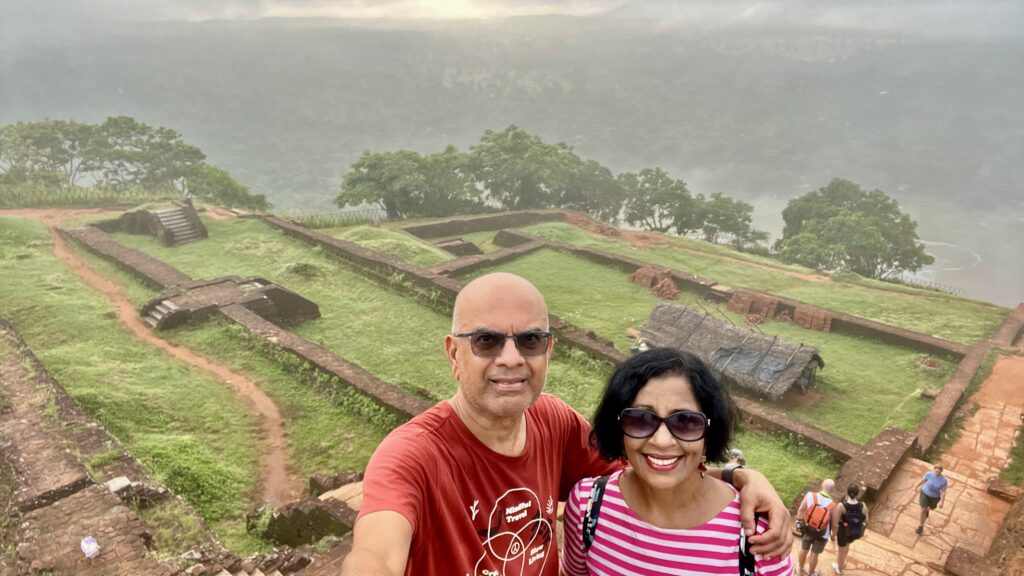
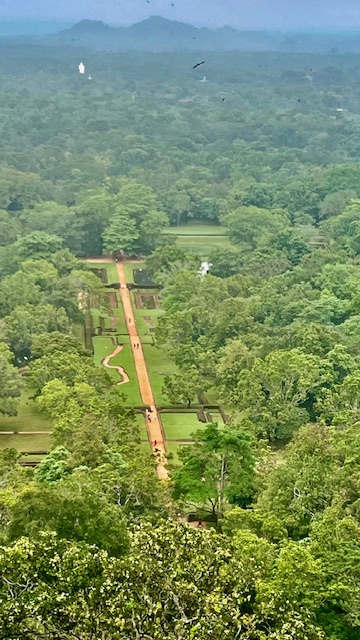



Although the palace at Sigiriya Rock was abandoned after the king’s death, it was used as a Buddhist Monastery until the 14th century. We spent about an hour at the top and then started the decent. You take a different and shorter path when you climb down and there are a few points of interest as you walk through the remains of the monastery on your way down. There is also a cave with frescoes of Hindu gods where we were not allowed to take pictures.
- Mirror Wall – King Kasyapa built the wall over 1,600 years ago. It was originally white and covered the entire stairway leading to the fortress. Only about 100 meters of the wall remains today and it is now a brick wall with a plaster finish.
- Audience Hall – This audience hall belonged to the royal city complex of King Kasyapa.
- Asana Cave – This Asana Cave, with a drip-ledge, takes the name from the seat (asana) inside, carved out of the living rock. This has been made for the use of meditating monks when Sigiriya was a monastery before Kasyapa.
- Cobra Hood Cave – A natural formation which resembles a cobra’s hood. The cave’s interior was once decorated with floral and animal paintings, and there’s a 2nd century BC inscription below the drip ledge




The climb down is a lot easier and faster and takes about 30-40 minutes with stops to see all the attractions.
Cinnamon Lodge, Habarana – This is a beautiful lodge with greenery all around. The rooms were spacious with a balcony from where you got a great view of the garden and the shimmering Habarana Lake.The dinner and breakfast buffet spread was awesome too.

